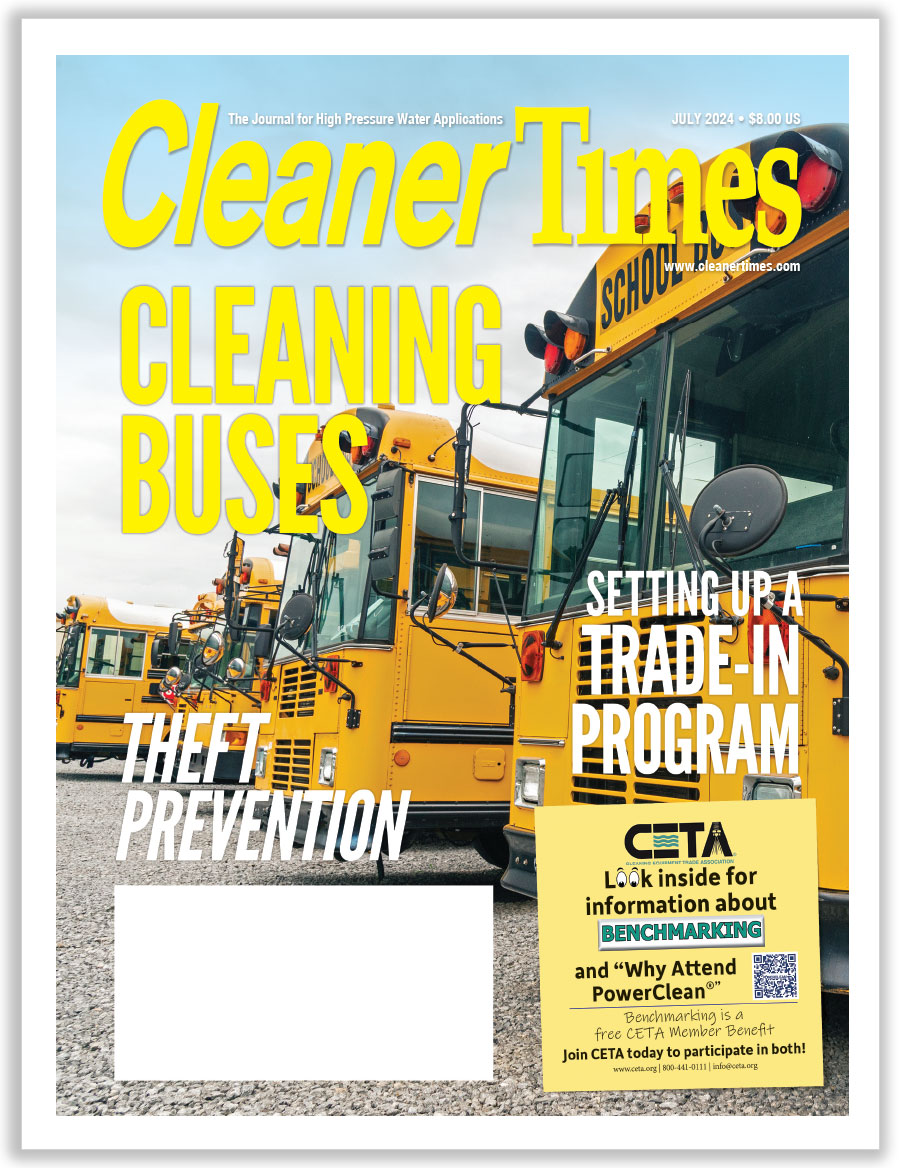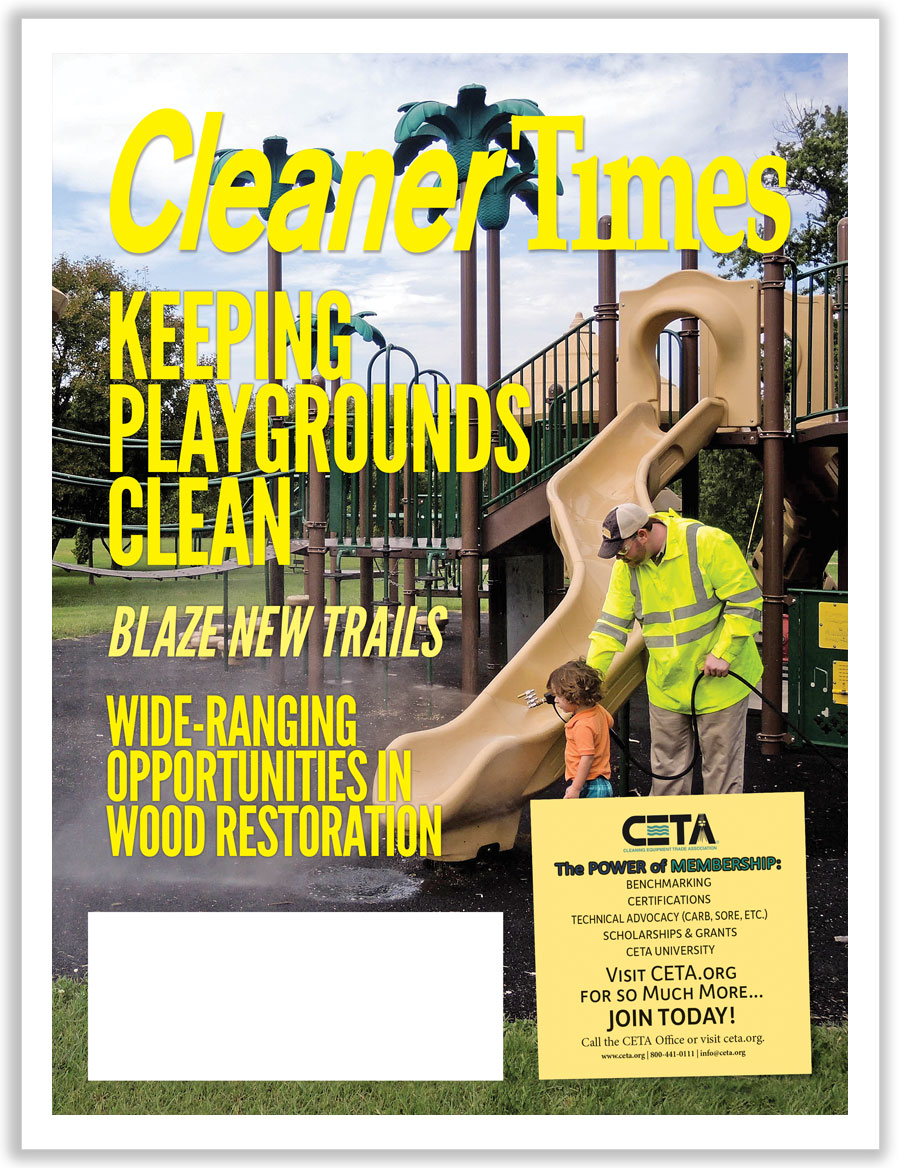
Financial
Affordable Hiring with Help from Uncle Sam
By Mark E. Battersby / Published April 2023

Uncle Sam, in the form of the IRS and the Department of Labor (DOL), wants to help pressure cleaning contractors, equipment distributors, and suppliers cut their labor costs. The Work Opportunity Tax Credit (WOTC) is a federal tax credit available to employers for hiring individuals from certain targeted groups who have consistently faced significant barriers to employment.
Best of all, the WOTC is a tax credit that, unlike a deduction from taxable income, directly reduces the annual tax bill. In other words, the WOTC is a direct, dollar-for-dollar write-off, and it isn’t chicken feed.
Calculating The WOTC
In general, the WOTC equals up to 40 percent of up to $6,000 in wages paid to or incurred on behalf of an individual who meets the following criteria:
- Is in their first year of employment
- Is certified as being a member of a targeted group, and
- Performs at least 400 hours of service for the pressure washing operation.
That generally works out to a maximum tax credit of $2,400. Lower tax credits are available for hiring qualified individuals who perform less than full-time work for the pressure washing operation.
For disabled veterans the credit may be available for the first $24,000 of wages, or up to $9,600 per worker. Once again, the tax credit, unlike a tax deduction, offsets the employer’s final tax bill.
Although an employer cannot claim the WOTC for employees who are rehired, employers can claim the Work Opportunity credit against taxable income for the year that they “realize” the credit. In other words, the year that the credit was awarded, not the year the employee was hired.
Unfortunately, the WOTC is “non-refundable,” meaning the pressure washing business must have a so-called tax “liability” against which to use the credit. However, a business with a tax bill can carry the current year’s unused WOTC back one year and then forward for up to 20 years.
Part-Time And/Or Seasonal Hires
The WOTC is limited to the amount of the pressure washing operation’s business income tax liability or Social Security tax owed—but wages paid to temporary, seasonal, part-time, and full-time employees qualify for the credit.
All pressure cleaning contractors and related businesses are eligible when hiring seasonal employees. However, when hiring employees for a specific period of time, especially part-time employees, keep in mind that the minimum number of hours to qualify for the WOTC is 120 hours. If the employee reaches that minimum, the employer can potentially qualify for a 25 percent tax credit of the first $6,000 in wages paid.
A 40 percent tax credit of the first $6,000 in wages is available for someone at 400 hours. It may take someone working less than 30 hours a week a little longer to reach 120 hours or 400 hours, but they are still eligible for the WOTC so long as they come from one of the qualifying target groups.
Unfortunately, seasonal workers are often returning workers. Returning employees will not qualify for the WOTC. Only workers who have never worked for the pressure cleaning operation before are eligible.
How The WOTC Works
Although the WOTC is a federal tax credit, it is administered at the state level. Because lawmakers incentivized hiring, employers can claim the tax credit for a qualifying employee in their first year of hire. After all, staying on the job for more than a year is great, but the WOTC was designed to give people a chance at a job.
As mentioned, the tax credit, depending on the category of the person hired, allows a business to claim between $2,400 and $9,600 per person. Businesses that do a lot of hiring—especially those hiring hourly workers—would benefit by attempting to determine whether job candidates fall within one of the targeted groups.
The groups targeted by Congress include those on government assistance programs, veterans, the disabled, felons, and the long-term unemployed. Specifically, the ten categories are as follows:
- Qualified IV-A Recipient
- Qualified veteran
- Ex-Felon
- Designated Community Resident (DCR) living in an Empowerment Zone or Rural Renewal County
- Vocational Rehabilitation Referral
- Summer Youth Employees living in Empowerment Zones
- Supplemental Nutrition Assistance Program (SNAP) Recipient
- Supplemental Security Income (SSI) recipients
- Long-Term Family Assistance Recipient
- Qualified Long-Term Unemployment Recipients.
The WOTC along with other programs that incentivize workplace diversity are often overlooked sources that can be tapped for combatting worker shortages. Recent changes to two programs illustrate how rewarding hiring from these pools can be.
The Returning Heroes Tax Credit, for example, now provides incentives of up to $5,600 for hiring unemployed veterans, while the Wounded Warriors Tax Credit doubles the existing WOTC up to $9,600 for long-term unemployed veterans with service-connected disabilities.
Another credit, the Differential Wage Payment Credit, pays employers who pay Reserve and National Guard employees while they are away on active duty for more than 30 days and who have been employees for more than 90 days. The credit is 20 percent of up to $20,000 of differential wage payments paid to each qualified employee during the tax year. What’s more, the credit is now permanently available to all employers.
Screening and Certification
The WOTC can help employers reduce their federal income tax liability as well as serve as an incentive for them to hire, train, and retain job seekers who can otherwise have challenges finding employment for a variety of reasons.
Many employers fail to conduct WOTC screening and identify WOTC candidates, believing it to be a complicated and time-consuming procedure for each party involved. However, in reality employers need only complete a one-page form by the day the job offer is made and file another one-page form within 28 days of hiring an eligible employee.
Specifically, there is a pre-screening and certification process. To satisfy the requirement to pre-screen a job applicant when or before a job offer is made, a pre-screening notice (Form 8850, Pre-Screening Notice and Certification Request for the Work Opportunity Credit) must be completed by the job applicant and the employer.
After pre-screening a job applicant, the employer must then request certification by submitting Form 8850 to the appropriate state workforce agency no later than 38 days after the employee begins work.
The completed and signed IRS and ETA (the U.S. Department of Labor’s Employment and Training Administration [ETA] is also involved) forms are submitted to the proper state workforce agency—not the IRS or other federal agency—within 28 days of the employee’s start date.
Accommodating The Workforce
Despite the tax incentives, going the extra mile to accommodate workers from these pools can be expensive. Fortunately, several incentives in addition to the WOTC exist to ease the financial burden. Besides the WOTC, employers can take advantage of other incentive programs such as the Disabled Access Credit (DAC), which provides a non-refundable tax credit accommodating the new hires.
Under the DAC, pressure washing businesses incurring expenditures for providing access to persons with disabilities can claim a tax credit, a direct reduction of the pressure washing operation’s tax bill rather than a deduction, for qualifying expenditures. An eligible small business is one that earned $1 million or less or had no more than 30 full-time employees in the previous tax year.
Another write-off, this one a tax deduction called the Architectural Barrier Removal Tax Deduction, encourages businesses to remove architectural and transportation barriers to the mobility of people with disabilities and the elderly. Businesses may claim a tax deduction of up to $15,000 a year for qualified expenses for items that must normally be capitalized.
Even better, a business may use the Disabled Tax Credit and the Architectural/Transportation tax deductions together in the same tax year if the expenses meet the requirements of both provisions. To use both, the deduction is equal to the difference between the total expenditures and the amount of the credit claimed.
Here Today, Gone Down The Road
With many businesses facing a tight job market, the IRS continues to issue reminders about the tax credit available for long-term unemployment recipients and other groups of workers facing significant barriers to employment. This long-standing, but often overlooked, tax benefit encourages employers to hire workers certified as members of groups targeted because they face barriers to employment.
There is no limit on the number of qualified individuals that a pressure cleaning business can hire, making the WOTC a significant option for any business willing to add a screening phase to their hiring process. Still, many businesses balk because of concerns about being accused of discrimination, the administrative time burden, or uncertainty about whether the tax credit will be renewed by lawmakers.
A more immediate downside of the WOTC is that it is only a temporary tax break. The WOTC has been extended through the 2025 tax year, giving employers several more years of tax incentives for hiring eligible workers, including veterans. Will your pressure cleaning business join other employers who cut their business expenses and currently claim over $1 billion in tax credits each year under the WOTC program?






